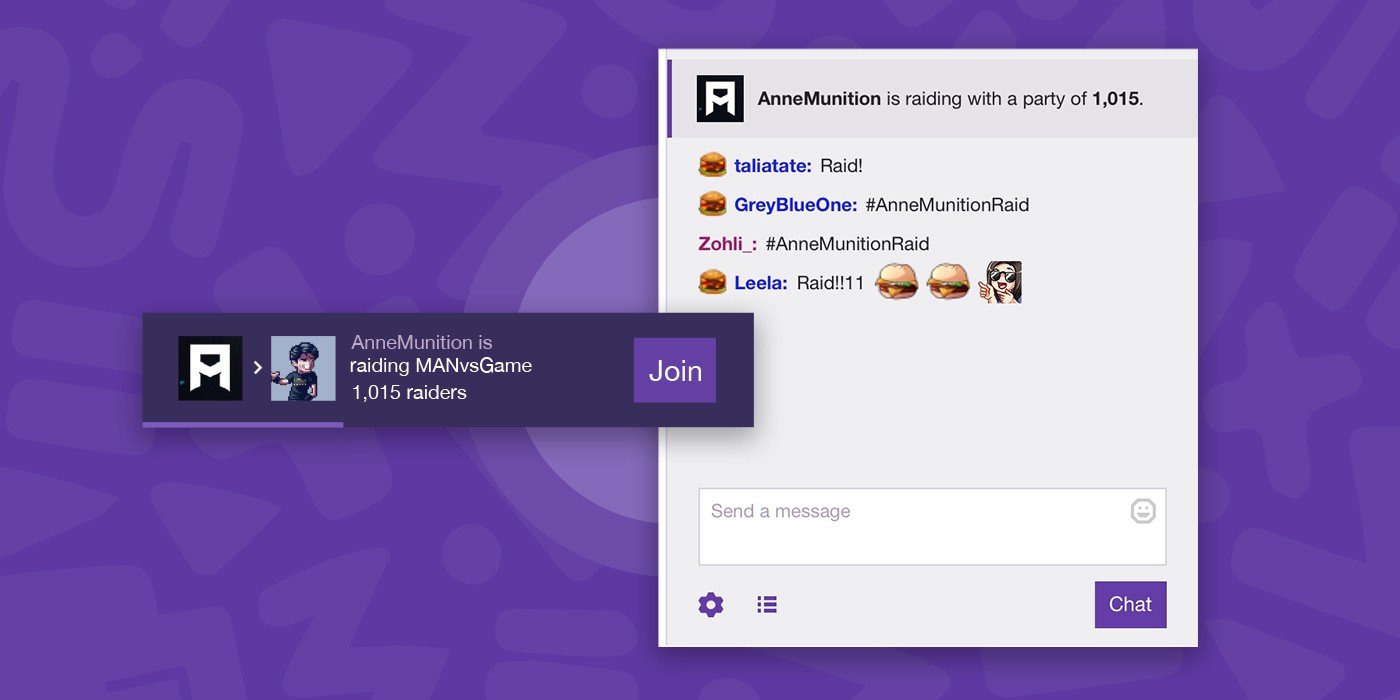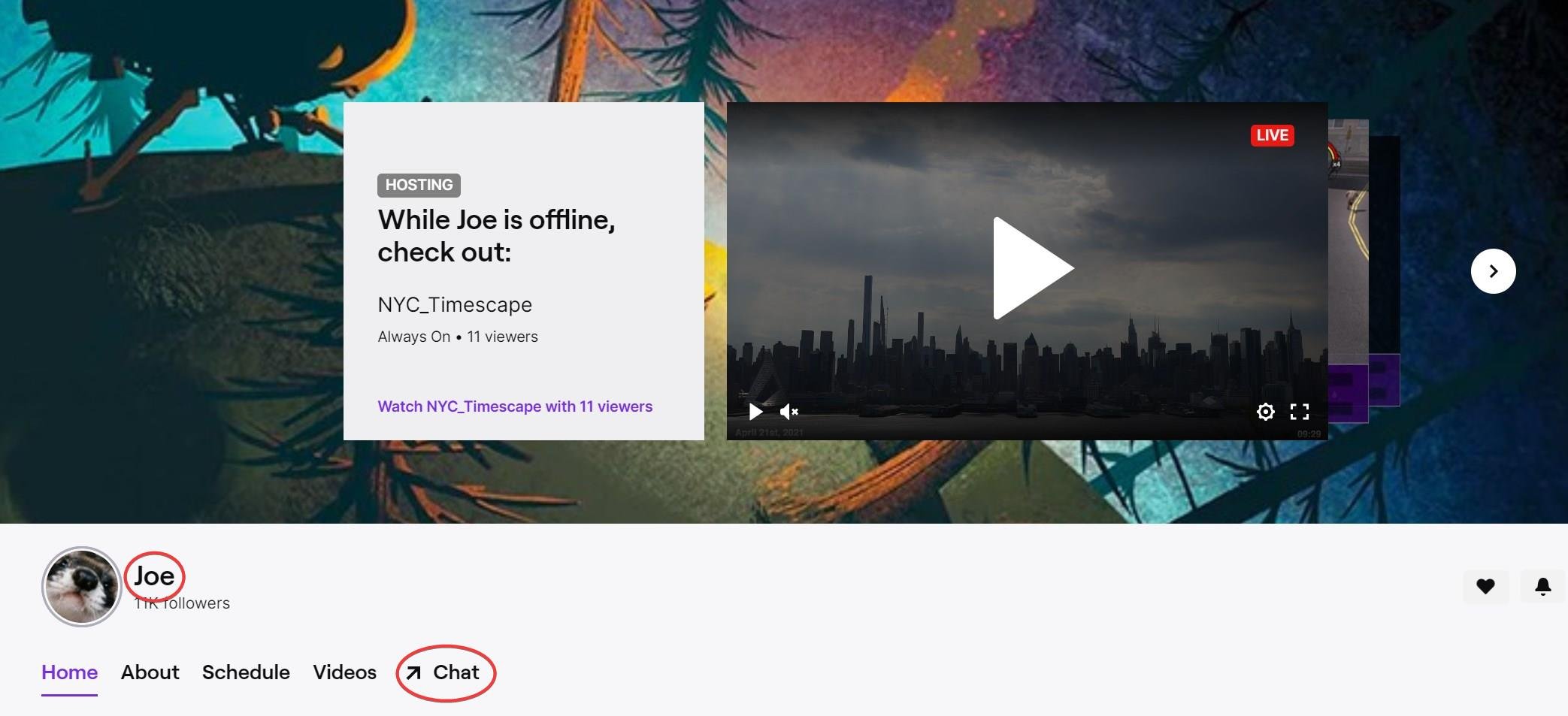How Twitch Raids work, and how to use them
Twitch Raids are a social function within the Twitch streaming platform that allow streamers to connect with each other in a supportive fashion. They let one streamer share their viewers directly with another channel, adding their own audience to that of the Raid target. Twitch Raids effectively allowing a streamer to ‘gift’ their viewership to another channel, introducing their audience to new content they might like, while giving the recipient channel a boost in audience numbers.
Culturally, they’re fundamental to how Twitch works, and how its community interact with and support each other, and also a handy tool in optimising Twitch marketing campaigns. Read on, and we’ll break down everything you need to know.
How Twitch Raids work
Twitch Raids are a system within Twitch’s streamer tools that allows an active streamer to automatically redirect their currently live audience over to another live Twitch streamer’s page, instantly boosting the other streamer’s viewership and flooding their chat with new users.
Image source: blog.twitch.tv
There are multiple reasons to use a Twitch Raid, from basic support of a friend or favourite up-and-coming streamer, to strategic pooling of audience numbers around a piece of branded content or influencer marketing. But regardless of the aim, the overall format of a Twitch Raid remains the same. Twitch Raids are effectively a relay system, a way to ‘tag in’ a live Twitch audience from one stream to another, usually at the end of the former, in order to share and expand viewership.
How to use Twitch Raids
Using Twitch Raids is pretty simple from a streamer’s perspective. The streamer triggering the Twitch Raid simply has to type “raid/”, followed by the channel name being targetted (so “raid/ InsertChannelHere”), in order to trigger a 10-second ‘ready-up’ countdown for their audience. You can also click on the Raid Channel quick action in your streaming dashboard to pull up a channel search window.
Either way, a chat notification will track this countdown, and the present channel viewership will be automatically sent over to the Raid target channel when it hits zero - or sooner, if the streamer running the Raid clicks ‘Raid now’ to override the countdown. Twitch Raids can also be cancelled by the streamer instigating them at any point during this 10-second window.
Twitch Raid vs. Host
A Twitch Raid and Twitch Host both achieve similar goals by different means. While a Twitch Raid shares a Twitch streamer’s audience with another by sending them directly to the other streamer’s channel, Hosting on Twitch works the other way around. It embeds another Twitch streamer’s content on the host’s page, live and as it happens, in order to expose it to a wider viewership.
Image source: blog.twitch.tv
Both Twitch Raiding and Twitch Hosting are great ways of networking, supporting other streamers, or even rallying an audience for branded content campaigns or charity Twitch streams. The key difference is that when you Raid, you transport your viewers directly to the channel you’re hyping up (making your audience a part of the other channel’s chat audience), but when you host, you keep your audience on your own channel, remaining responsible for chat moderation despite no longer broadcasting. In both cases, the benefactor channel’s name will pop up as an alert in the recipient’s chat, crediting them with the Raid or Host event they’ve triggered.
How to block Twitch Raids
If for any reason you want to block Twitch Raids, or at least limit the ways in which other streamers and their audiences can Raid your channel, there are multiple functions within Twitch’s Stream Settings that will help you. There, you can allow or block all Raids, or filter them by friends, teammates, and followed channels only. Beyond that, you can limit the effect that incoming Twitch Raids have on your channel’s chat by reducing interaction options in Twitch’s Chat Settings via the cog in the bottom-right of your chat window. There, you can limit interaction to emotes-only, subscribers-only, followers-only, or slow-mode, decreasing the frequency with which users can make posts in chat.
In addition, you can retroactively ban or report channels who have raided you - if, say, any offensive chat content has resulted - by using the related controls within ‘Review Recent Raids’, under the ‘Tasks’ section of the Twitch Chat Settings.
Twitch Raids in a marketing campaign
Raids are most effective when they are used to signpost or transfer a community from one space to another. They also initiate a deeper sense of community by transplanting a set of people who connect in one chat to another, where they often post the raiding streamers emotes. This can be leveraged best in influencer marketing when a branded content activation happens on a channel separate to the influencers being partnered with. The streamers can start broadcasting on their own channels as normal, leveraging anticipation for the upcoming event, before raiding the brand or event channel with their pre-built audience as the activation starts.
This effectively bypasses the biggest barrier to entry of running events on brand channels on Twitch, a lack of native audience to consume content. Having multiple communities in the same chat can also generate high engagement from the interplay of the mingled audiences.
Sign up to our newsletter
Fourth Floor newsletter is your weekly feed of the biggest news, developments, insights, and analysis from the ever-evolving world of influencer marketing. It’s an invaluable, free resource sent to you inbox every Wednesday at 12 noon. Find out more


